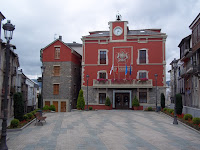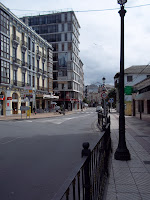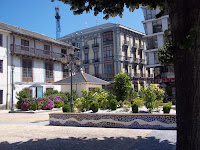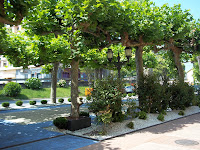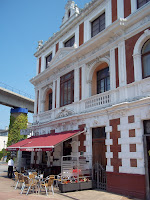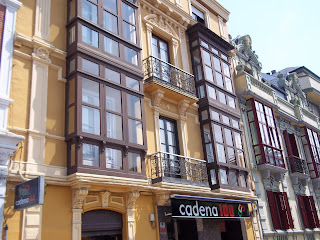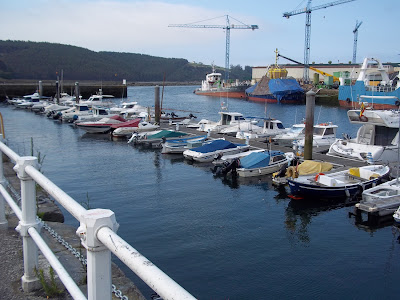
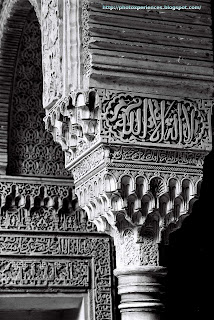 La Alhambra es una ciudad andalusí situada en Granada, España. A la vez fortaleza, medina (ciudad) y palacio, alojaba al monarca y a la corte del reino nazarí de Granada. Cuenta con innumerables atractivos como su imponente localización, su bella decoración interior, su magnífica conservación y su interesante historia, que le confieren un halo mágico.
La Alhambra es una ciudad andalusí situada en Granada, España. A la vez fortaleza, medina (ciudad) y palacio, alojaba al monarca y a la corte del reino nazarí de Granada. Cuenta con innumerables atractivos como su imponente localización, su bella decoración interior, su magnífica conservación y su interesante historia, que le confieren un halo mágico.The Alhambra is an Al-Andalus city located in Granada, Spain. While fortress, medina (city) and palace, it housed the monarch and the court of the Nasrid kingdom of Granada. It has many attractions as its stunning location, its beautiful interiors, magnificent conservation and intersting history, giving it a magical aura.
 Su nombre «Alhambra» en árabe es «al-Ħamrā» (اَلْحَمْرَاء, 'la Roja'), procedente del nombre completo «al-Qal'a al-hamra» ('fortaleza roja'). Y si hay quien opina que su nombre deriva del nombre de su fundador, Mohammed ben al-Ahmar, que en árabe significa 'el Rojo', por ser éste pelirrojo, nosotros preferimos quedarnos con la versión de una vieja leyenda que asegura que la Alhambra fue construida de noche, a la luz de las antorchas, que hacían que su paredes encaladas, vistas desde lejos, pareciesen del color de la sangre.
Su nombre «Alhambra» en árabe es «al-Ħamrā» (اَلْحَمْرَاء, 'la Roja'), procedente del nombre completo «al-Qal'a al-hamra» ('fortaleza roja'). Y si hay quien opina que su nombre deriva del nombre de su fundador, Mohammed ben al-Ahmar, que en árabe significa 'el Rojo', por ser éste pelirrojo, nosotros preferimos quedarnos con la versión de una vieja leyenda que asegura que la Alhambra fue construida de noche, a la luz de las antorchas, que hacían que su paredes encaladas, vistas desde lejos, pareciesen del color de la sangre.  Its name "Alhambra" in Arabic is "al-Hamra '(الحمراء, literally 'the Red one'), from the name" al-Qal'a al-Hamra' ('Red Fortress'). And if some people think that the name derives from the name of its founder, Mohammed ben al-Ahmar, which in Arabic means 'the Red', as he was redheaded, we prefer to stay with the version of an old legend that says the Alhambra was built at night, in the light of torches, which made its whitewashed walls, seen from afar, seem blood-colored.
Its name "Alhambra" in Arabic is "al-Hamra '(الحمراء, literally 'the Red one'), from the name" al-Qal'a al-Hamra' ('Red Fortress'). And if some people think that the name derives from the name of its founder, Mohammed ben al-Ahmar, which in Arabic means 'the Red', as he was redheaded, we prefer to stay with the version of an old legend that says the Alhambra was built at night, in the light of torches, which made its whitewashed walls, seen from afar, seem blood-colored.La Alhambra se halla al oeste de la ciudad, frente a los barrios del Albaicín y de la Alcazaba, sobre La Sabica, una colina de difícil acceso situada cerca del ríos Darro (de oro), protegida por las primeras estribaciones de Sierra Nevada, y rodeada de un tupido y selvático bosque.
 The Alhambra is located west of the city, opposite the Granada districts of Albaicin and Alcazaba, on The Sabica, an inaccessible hill near the river Darro (golden), protected by the foothills of the Sierra Nevada and surrounded by a dense and wild forest.
The Alhambra is located west of the city, opposite the Granada districts of Albaicin and Alcazaba, on The Sabica, an inaccessible hill near the river Darro (golden), protected by the foothills of the Sierra Nevada and surrounded by a dense and wild forest. No es de extrañar, por tanto, que en el siglo XIII el sultán al-Ahmar (Mohammed ibn Yusuf ben Nasr o Muhammad I) eligiera un lugar tan privilegiado para asentar, sobre algunas construcciones fortificadas preexistentes, su residencia real, e instalar en ella la sede de su corte. Sus descendientes ampliaron la ciudad y comenzaron a fortalecer el recinto defensivo. Los palacios son obra de los dos reyes más famosos de la dinastía nazarí: el rey Yusuf I y Mohamed V. Éstos levantaron buena parte de las torres del recinto amurallado, y edificaron el palacio de Comares, el patio de los Arrayanes, el salón del Trono, los baños árabes, el patio de los Leones, y la residencia privada del monarca y de su familia.
No es de extrañar, por tanto, que en el siglo XIII el sultán al-Ahmar (Mohammed ibn Yusuf ben Nasr o Muhammad I) eligiera un lugar tan privilegiado para asentar, sobre algunas construcciones fortificadas preexistentes, su residencia real, e instalar en ella la sede de su corte. Sus descendientes ampliaron la ciudad y comenzaron a fortalecer el recinto defensivo. Los palacios son obra de los dos reyes más famosos de la dinastía nazarí: el rey Yusuf I y Mohamed V. Éstos levantaron buena parte de las torres del recinto amurallado, y edificaron el palacio de Comares, el patio de los Arrayanes, el salón del Trono, los baños árabes, el patio de los Leones, y la residencia privada del monarca y de su familia.
No wonder, therefore, that in the thirteenth century the Sultan al-Ahmar (Mohammed ibn Yusuf ben Nasr or Muhammad I) choose a place so privileged to settle, over some preexisting fortified constructions, his royal residence, and install in it his court. His descendants expanded the city and began to strengthen the defensive enclosure. The palaces are the work of the two most famous kings of the Nasrid dynasty: King Yusuf I and Mohammed V. They raised many of the towers of the city walls, and built the palace of Comares, the Court of the Myrtles, the throne room, the Arab baths, the Court of the Lions, and the private residence of the monarch and his family.
 La Alhambra fue palacio, ciudadela y fortaleza, residencia de los sultanes nazaríes y de los altos funcionarios, servidores de la corte y de soldados de élite. La medina podía funcionar con autonomía respecto a la ciudad de Granada, ya que en ella se encontraban todos los servicios propios y necesarios para la población que vivía allí: palacio real, mezquitas, escuelas, talleres, etc.
La Alhambra fue palacio, ciudadela y fortaleza, residencia de los sultanes nazaríes y de los altos funcionarios, servidores de la corte y de soldados de élite. La medina podía funcionar con autonomía respecto a la ciudad de Granada, ya que en ella se encontraban todos los servicios propios y necesarios para la población que vivía allí: palacio real, mezquitas, escuelas, talleres, etc. The Alhambra was a palace, a citadel and a fortress, the residence of the Nasrid sultans and senior officials, servants of the court and elite soldiers. The medina could function autonomously from the city of Granada, as it comprised all the services necessary for the people living there: royal palace, mosques, schools, workshops, etc.
The Alhambra was a palace, a citadel and a fortress, the residence of the Nasrid sultans and senior officials, servants of the court and elite soldiers. The medina could function autonomously from the city of Granada, as it comprised all the services necessary for the people living there: royal palace, mosques, schools, workshops, etc.
Alcanza su esplendor en la segunda mitad del siglo XIV, cuando Granada se convirtió en una de las grandes capitales del mundo, no habiendo en su día ciudad alguna que rivalizara con su belleza, su cultura y su exquisita delicadeza. De esta forma, cuando el 2 de enero de 1492 los Reyes Católicos Isabel y Fernando entraron en la Alhambra, descubrieron maravillados un palacio de ensueño que se empeñaron en conservar para la posteridad.
 It reaches its glory in the second half of the fourteenth century, when Granada became one of the great capitals of the world, and in those days there was no city to rival in beauty, culture and exquisite delicacy. Thus, when the January 2, 1492 the Catholic Monarchs Isabella and Ferdinand entered the Alhambra, they were amazed to discover a dreamed palace, that they determined to preserve for posterity.
It reaches its glory in the second half of the fourteenth century, when Granada became one of the great capitals of the world, and in those days there was no city to rival in beauty, culture and exquisite delicacy. Thus, when the January 2, 1492 the Catholic Monarchs Isabella and Ferdinand entered the Alhambra, they were amazed to discover a dreamed palace, that they determined to preserve for posterity.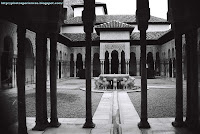 Tras arrebatar los Reyes Católicos el último reducto de la dominación musulmana a Boabdil (Mohamed Abu Abdalahyah), el rey moro y su séquito fueron desterrados de Granada. Camino a su destierro, Boabdil no osó girar la mirada hacia Granada, y sólo cuando estuvo a mucha distancia, sobre la colina conocida desde entonces por El Suspiro del Moro se detuvo, y observando por última vez su palacio... suspiró, y rompió a llorar, y fue su propia madre quien le dijo: "Llora como mujer lo que no has sabido defender como hombre".
Tras arrebatar los Reyes Católicos el último reducto de la dominación musulmana a Boabdil (Mohamed Abu Abdalahyah), el rey moro y su séquito fueron desterrados de Granada. Camino a su destierro, Boabdil no osó girar la mirada hacia Granada, y sólo cuando estuvo a mucha distancia, sobre la colina conocida desde entonces por El Suspiro del Moro se detuvo, y observando por última vez su palacio... suspiró, y rompió a llorar, y fue su propia madre quien le dijo: "Llora como mujer lo que no has sabido defender como hombre". 
 After the Catholic Monarchs snatched the last stronghold of the Muslim rule, Boabdil (Abu Mohamed Abdalahyah), the Moorish king and his entourage were banished from Granada. Road to his banishment, Boabdil dared not turn his gaze to Granada, and only when he was far away, on the hill known since then for The Sigh of the Moor paused, and watching his palace for the last time ... sighed, and began to mourn, and it was his mother who told him: "Thou dost weep like a woman for what thou couldst not defend as a man".
After the Catholic Monarchs snatched the last stronghold of the Muslim rule, Boabdil (Abu Mohamed Abdalahyah), the Moorish king and his entourage were banished from Granada. Road to his banishment, Boabdil dared not turn his gaze to Granada, and only when he was far away, on the hill known since then for The Sigh of the Moor paused, and watching his palace for the last time ... sighed, and began to mourn, and it was his mother who told him: "Thou dost weep like a woman for what thou couldst not defend as a man". Tras la conquista cristiana los reyes Isabel y Fernando mandaron preservar la Alhambra, al igual que su hija Juana. Su hijo, el emperador Carlos V ordenó construir su palacio, las habitaciones del emperador, y el Peinador de la reina. Tras él, la Alhambra comenzó a ser abandonada y olvidada, hasta que a partir de mediados del siglo XIX los viajeros románticos pregonaron su belleza y resurgió el interés por su reparación, restauración y conservación. Finamente, en 1984, el Comité del patrimonio mundial de la Unesco declaró la Alhambra y el Generalife de Granada como Patrimonio de la Humanidad.
Tras la conquista cristiana los reyes Isabel y Fernando mandaron preservar la Alhambra, al igual que su hija Juana. Su hijo, el emperador Carlos V ordenó construir su palacio, las habitaciones del emperador, y el Peinador de la reina. Tras él, la Alhambra comenzó a ser abandonada y olvidada, hasta que a partir de mediados del siglo XIX los viajeros románticos pregonaron su belleza y resurgió el interés por su reparación, restauración y conservación. Finamente, en 1984, el Comité del patrimonio mundial de la Unesco declaró la Alhambra y el Generalife de Granada como Patrimonio de la Humanidad.
After the Christian conquest, kings Ferdinand and Isabella sent preserve the Alhambra, like his daughter Joanna. Her son, the Emperor Charles V ordered the construction of his palace, the rooms of the emperor and the queen peignoir. Behind him, the Alhambra began to be abandoned and forgotten, until from the mid-nineteenth century romantic travelers touted its beauty and renewed the interest for its repair, restoration and conservation. Finally, in 1984, the World Heritage Committee of Unesco declared the Alhambra and Generalife of Granada as a World Heritage Site.



